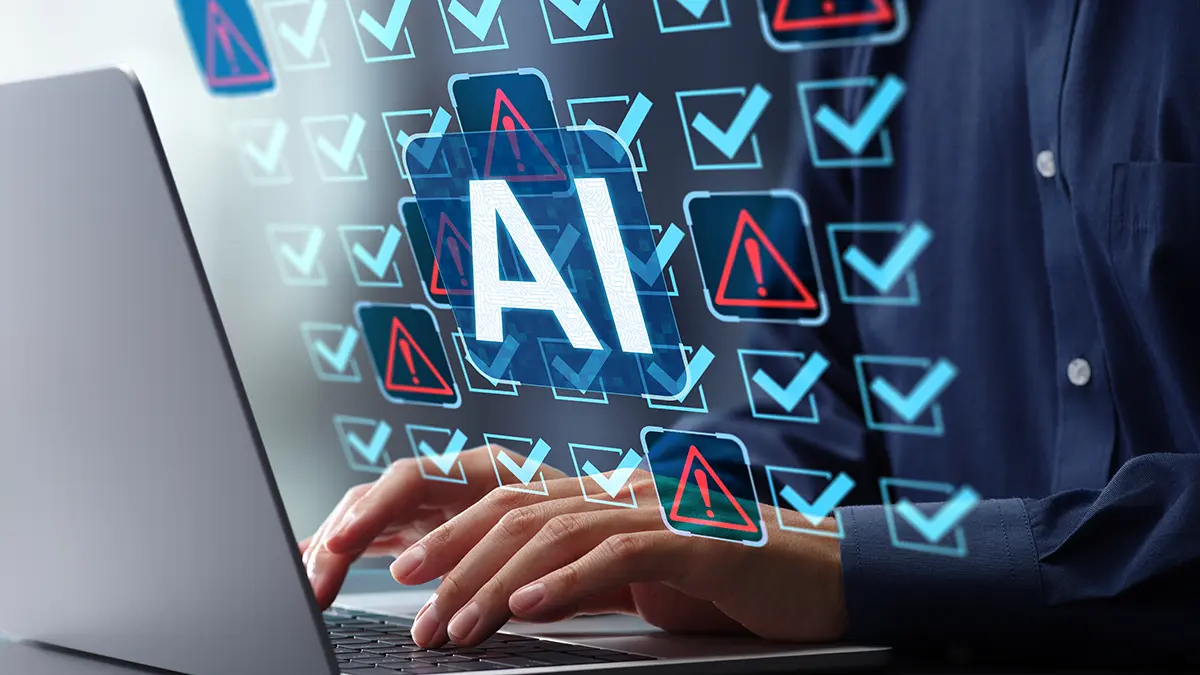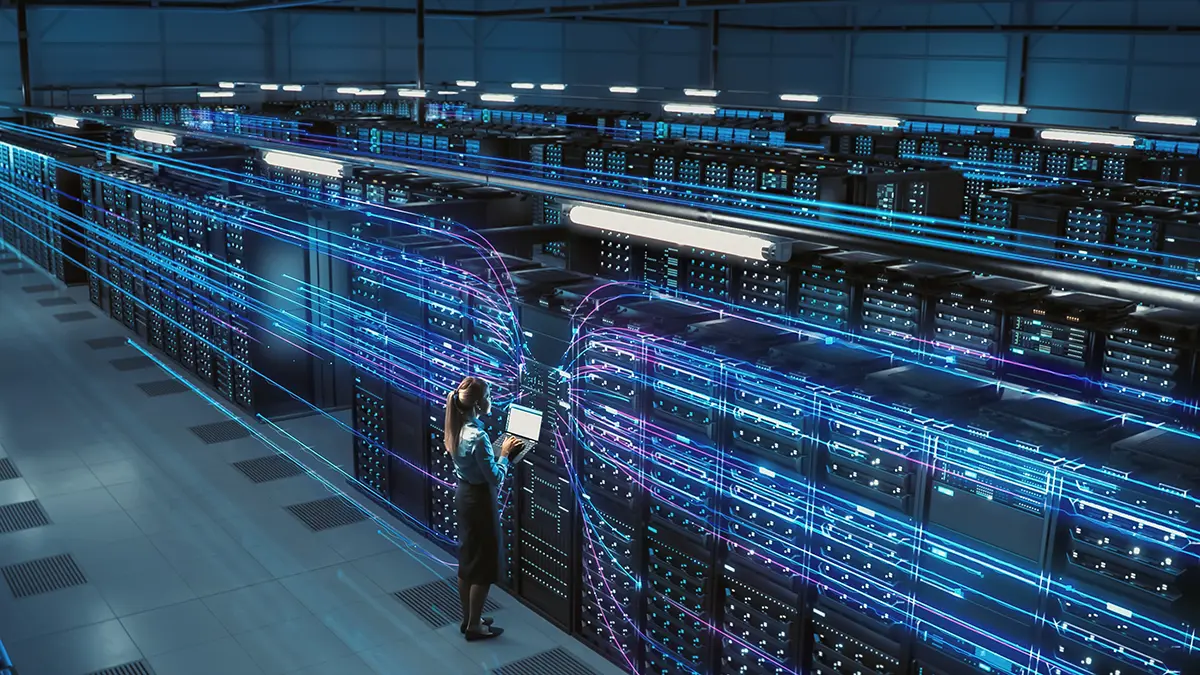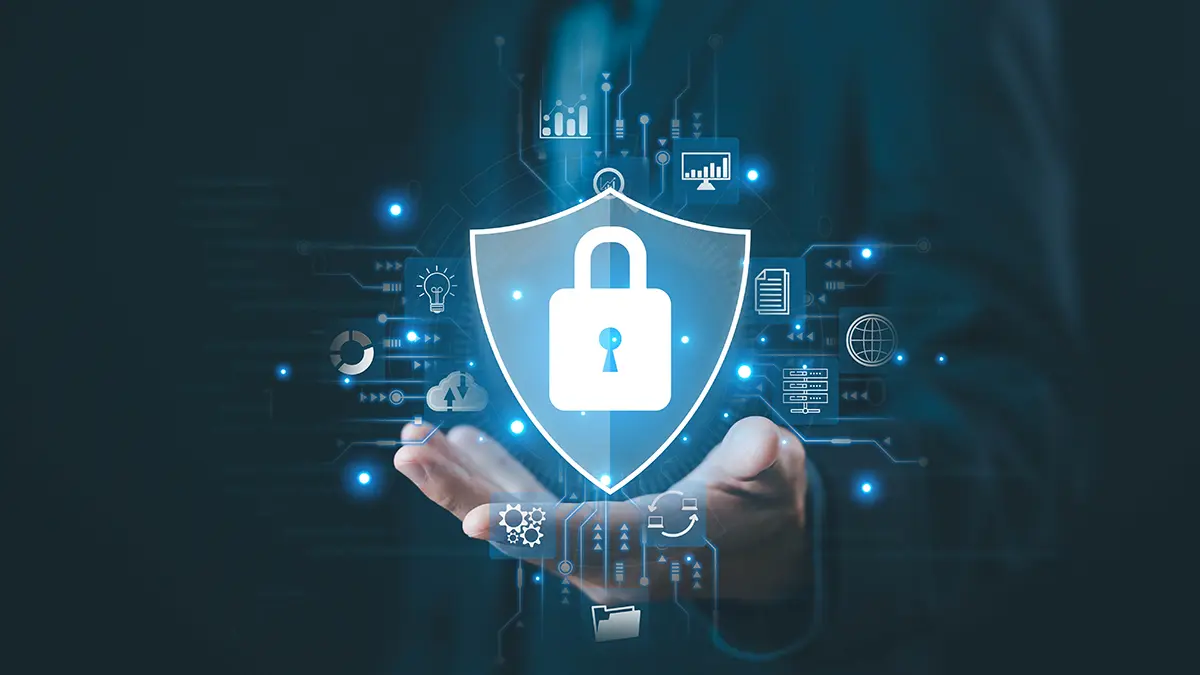
The New Face of Cyber Threats: How AI is Reshaping the Cybersecurity Landscape
Key Takeaways
- AI-Powered Attacks: Cybercriminals use AI to mimic users, launch realistic phishing scams, and scale attacks in minutes.
- Advanced Social Engineering: Deepfakes and generative AI make phishing and impersonation harder to detect.
- Intelligent Malware: Adaptive ransomware now learns system behaviors to bypass detection.
- Proactive Defense: Businesses must adopt AI-driven security tools for real-time threat detection and response.
- Zero Trust Architecture: Verifying every user and device reduces risk from insider threats and credential abuse.
- Stronger Identity Management: Use behavioral biometrics and conditional access for enhanced protection.
- Security Awareness Training: Regular simulations help employees recognize and report AI-powered threats.
- Critical Infrastructure Protection: Patch management, segmentation, and quantum-readiness are key safeguards.
- Expert Support: Partnering with cybersecurity professionals ensures resilience in a rapidly evolving threat landscape.
Artificial intelligence is changing the game – and not just in terms of innovation and productivity. In recent months, we’ve seen a dramatic shift in how cybercriminals operate, fueled by powerful AI tools that make their attacks faster, more convincing, and much harder to stop.
These threats aren’t theoretical anymore. Across Ohio and the nation, AI-powered attacks are already exploiting businesses with alarming precision. A phishing email that mimics your CFO’s tone. A malware file that learns your system’s behavior. A deepfake voice message that tricks an employee into wiring funds.
What used to take days or weeks to plan, cybercriminals can now launch in minutes—and at scale.
Welcome to the era of AI-enabled cybercrime.
The good news? Businesses don’t have to sit back and watch it happen.

Understanding the Evolving Cyber Threat Landscape
The threat landscape has undergone a fundamental shift. Threat actors are leveraging artificial intelligence and machine learning to create more sophisticated attacks that traditional security measures struggle to detect. These emerging threats pose significant risks to organizations of all sizes, from small businesses to critical infrastructure.
AI-driven attacks represent a new category of cyber threats that adapt and evolve in real-time. Unlike traditional malware that follows predictable patterns, these intelligent threats can:
- Learn from security responses and adjust their tactics accordingly
- Mimic legitimate user behavior to avoid detection by conventional security tools
- Scale attacks across thousands of targets simultaneously
- Generate convincing social engineering content that bypasses human intuition
The implications are staggering. Cybersecurity professionals report that AI-powered attacks are increasingly difficult to distinguish from legitimate activity, creating new blind spots in traditional security frameworks.

The Rise of AI-Driven Threat Actors
Modern threat actors are no longer limited by human capabilities. Generative AI tools enable cybercriminals to:
Enhanced Social Engineering Attacks
Sophisticated social engineering attacks now leverage AI to create highly personalized phishing attempts. These aren’t the poorly written emails of the past—today’s attacks are sharp, contextually relevant, and can perfectly mimic communication patterns from trusted sources.
Nation-state actors and cybercriminal groups are using AI to:
- Analyze social media profiles and corporate communications
- Generate convincing voice deepfakes for phone-based attacks
- Create targeted spear-phishing campaigns at unprecedented scale
- Develop multilingual attack vectors that adapt to regional contexts
Intelligent Malware and Ransomware
Ransomware attacks have become more destructive with AI integration. These new threats can:
- Automatically identify and prioritize high-value targets within networks
- Adapt encryption methods based on system responses
- Evade detection by learning from security tool behaviors
- Coordinate multi-vector attacks across different entry points

How Your Business Can Fight Back
The fight against AI-powered threats doesn’t require a massive overhaul—but it does require a smarter, more proactive cybersecurity strategy. Here’s how your business can stay ahead of these evolving challenges.
1. Make AI Your Ally, Not Just Your Adversary
If attackers are using AI, your defenses need to do the same. Modern security measures now leverage artificial intelligence and machine learning for real-time threat detection and response.
Machine learning algorithms can:
- Analyze network traffic patterns to identify anomalies
- Detect behavioral changes that indicate compromised accounts
- Automatically respond to threats faster than human analysts
- Predict attack vectors before they’re executed
At Revolution Group, we deploy these AI-enabled platforms as part of our managed security services. They help spot threats traditional antivirus tools miss—and respond in milliseconds to protect sensitive data and critical infrastructure.
“The reality is that cybercriminals are using AI to level up their attacks in ways we’ve never seen before,” says Rick Snide, CEO of Revolution Group. “But the same technology that’s empowering these threats can also be our greatest defense—if businesses are willing to adapt their security strategies accordingly.”
2. Implement Zero Trust Architecture
Traditional perimeter-based security is insufficient against AI-driven attacks. Zero-trust architectures assume that no user or device is inherently trustworthy, requiring verification for every access request.
Key components include:
- Multi-factor authentication for all system access
- Continuous monitoring of user behavior and device health
- Microsegmentation to limit lateral movement
- Regular access reviews and privilege management
This approach significantly reduces the risk profile of insider threats and compromised credentials.
3. Strengthen Identity and Access Control
AI makes it easier for attackers to impersonate someone you trust. That’s why identity has become the front line of cybersecurity.
Simple two-factor authentication isn’t always enough. Regulatory compliance frameworks increasingly require:
- Conditional access policies that evaluate login behavior, location, and device type
- Behavioral biometrics and context-aware authentication
- Regular access reviews and automated de-provisioning
- Privileged access management for administrative accounts
4. Advanced Threat Detection and Response
Real-time threat detection is crucial for identifying AI-driven attacks before they cause data breaches. Modern security teams need:
- Threat intelligence feeds that provide early warning of emerging attack patterns
- Security orchestration tools that automate response workflows
- Incident response plans specifically designed for AI-powered threats
- Regular cybersecurity assessments to identify vulnerabilities and weak spots
5. Protect Critical Infrastructure and Sensitive Systems
Critical infrastructure faces heightened risks from nation-state actors and sophisticated cybercriminal groups. Organizations must implement robust security measures, including:
- Patch management programs that address vulnerabilities quickly
- Network segmentation to isolate critical services
- Backup and recovery systems that can withstand ransomware attacks
- Post-quantum cryptography preparation for future threats
6. Comprehensive Security Awareness Training
Cybersecurity professionals emphasize that technology alone isn’t sufficient. Many organizations underestimate the importance of human-centered security.
Effective training programs should:
- Simulate AI-powered phishing attempts regularly
- Educate employees about social engineering tactics
- Create reporting mechanisms for suspicious activities
- Build a culture of security awareness throughout the organization
7. Partner with Expert Security Teams
The complexity of modern cyber threats necessitates specialized expertise. Security teams must stay ahead of rapidly evolving attack techniques while managing day-to-day operations.
At Revolution Group, we combine local support with enterprise-grade security capabilities. Our team works with small and mid-sized businesses across Columbus to:
- Conduct comprehensive cybersecurity assessments
- Implement AI-powered threat detection systems
- Provide incident response and recovery services
- Offer virtual CISO expertise for strategic guidance

Addressing Specific Threat Categories
Ransomware and Data Exfiltration
Ransomware attacks have become more targeted and destructive. Threat actors now focus on data exfiltration before encryption, creating dual pressure on victims.
Protection strategies include:
- Regular, tested backups stored in immutable formats
- Network segmentation to limit attack spread
- Endpoint detection and response (EDR) solutions
- Incident response plans specific to ransomware scenarios
Insider Threats and Privilege Abuse
Insider threats represent a significant portion of security incidents. Whether intentional or accidental, employees with access to sensitive information pose risks that AI can exploit.
Mitigation approaches:
- User behavior analytics to detect anomalous activities
- Least privilege access principles
- Regular access reviews and certification processes
- Data loss prevention (DLP) tools for sensitive data protection
Supply Chain and Third-Party Risks
Cyber espionage and nation-state actors increasingly target supply chains to reach primary targets. Organizations must evaluate and manage third-party risks.
Key considerations:
- Vendor security assessments and ongoing monitoring
- Contractual security requirements for suppliers
- Supply chain risk management programs
- Incident response coordination with partners

The Role of Geopolitical Tensions
Geopolitical tensions have intensified cyber threats from nation-state actors. These sophisticated adversaries target:
- Critical infrastructure, including power grids and financial systems
- Government agencies and defense contractors
- Healthcare organizations and research institutions
- Technology companies and intellectual property
Organizations must understand their threat landscape and implement appropriate security measures based on their risk profile.

Looking Ahead: Future Threat Considerations
Post-Quantum Cryptography
As quantum computing advances, post-quantum cryptography becomes essential for long-term security. Organizations should begin preparing for this transition now.
AI Governance and Ethics
The public sector and private industry must collaborate on AI governance frameworks that strike a balance between innovation and security requirements.
Continuous Adaptation
The digital world requires constant vigilance. The security posture must continually evolve to address new threats and emerging vulnerabilities.

Building Resilient Cybersecurity Operations
Effective cybersecurity isn’t just about technology— The most mature, prepared organizations are building resilient operations that can respond to incidents quickly and effectively.
Key components include:
- Incident response teams with clear escalation procedures
- Regular tabletop exercises and cyber incident simulations
- Communication plans for stakeholders and customers
- Legal and regulatory compliance frameworks

Conclusion: Readiness Over Fear
AI has changed the rules of the cybersecurity game, but the goal remains the same: protect your people, your data, and your reputation.
The new face of cyber threats requires a comprehensive approach that combines advanced technology, skilled personnel, and strategic planning. Organizations that invest in robust cybersecurity capabilities will not only withstand AI-powered attacks but also emerge stronger and more resilient.
At Revolution Group, we help businesses navigate this complex threat landscape with practical solutions and expert guidance. Whether you need comprehensive security assessments, threat detection systems, or strategic cybersecurity planning, we’re here to help you build a robust defense against the evolving cyber threats of 2025 and beyond.
Don’t wait for an incident to expose your vulnerabilities. Take proactive steps today to safeguard sensitive information and establish a security-first culture that can adapt to the challenges that emerge in the digital world.
“Too many businesses think cybersecurity is just about having the right technology,” notes Rick Snide. “But in this new AI-driven threat landscape, success comes down to having the right combination of advanced tools, trained people, and strategic thinking. That’s what separates organizations that thrive from those that become headlines.”
The future of cybersecurity is here, and with the right preparation, your organization can thrive in this new landscape.

